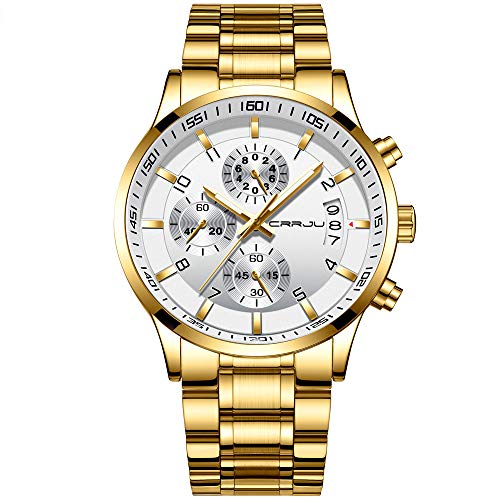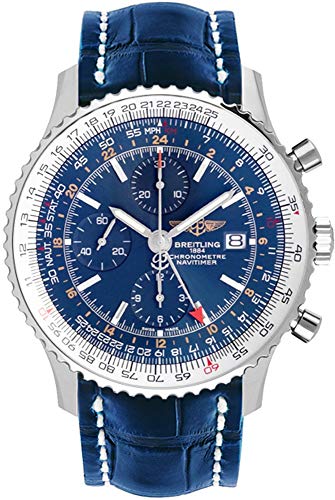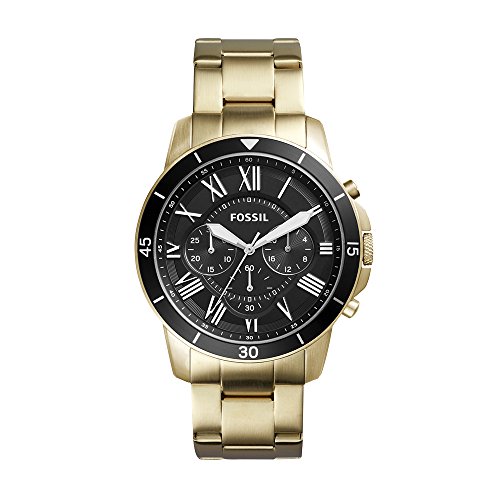Have you ever found yourself perplexed by the collection of small dials on a chronograph watch? If so, you’re not alone. Many watch enthusiasts and novices alike are often left wondering about the purpose and relevance of these sub-dials. Fear not, for this blog post is here to demystify the mysteries and unravel the secrets of these intriguing features. Join us as we delve into the world of chronographs and explore the different functions that these sub-dials hold, providing a deeper understanding and appreciation for these fascinating timepieces.
Top-selling Chronograph Watches with Sub-Dials
What is a chronograph watch?
A chronograph watch is a type of timepiece that not only tells the time but also includes additional features that allow for accurate and precise measurement of elapsed time. Unlike a regular watch that only displays hours, minutes, and seconds, a chronograph watch has additional sub-dials, pushers, and a tachymeter scale.
How does it differ from a regular timepiece?
- Functionality: The primary difference between a chronograph watch and a regular timepiece is the ability to measure and record elapsed time. While a regular watch is designed solely for timekeeping, a chronograph watch offers additional stopwatch functions.
- Design Elements: Chronograph watches typically feature sub-dials on the main dial face. These sub-dials can be used to track minutes, hours, and seconds. They are often displayed in a symmetrical arrangement, adding a sporty and sophisticated look to the watch.
- Pushers: Chronograph watches also have pusher buttons located on the sides of the case. These pushers control the start, stop, and reset functions of the stopwatch feature. By pressing the designated pushers, users can measure different time intervals and record them using the sub-dials.
- Tachymeter Scale: Another notable feature of chronograph watches is the tachymeter scale. This scale, often displayed around the outer edge of the watch dial, enables users to calculate speed based on time elapsed. By knowing the distance traveled over a specific time period, the tachymeter scale allows for quick and easy speed measurements.
The Functions of Sub-dials
The sub-dials on a chronograph watch serve distinct purposes and provide additional functionality beyond timekeeping. Here are the common functions of the sub-dials:
- Seconds Sub-dial: This sub-dial tracks elapsed seconds. It generally rotates continuously, acting as a regular seconds hand.
- 30-Minute Sub-dial: The 30-minute sub-dial measures elapsed time up to 30 minutes. It is often used to time events, activities, or intervals within a shorter time frame.
- 12-Hour Sub-dial: The 12-hour sub-dial records elapsed time up to 12 hours. It allows for accurate tracking of prolonged events or activities over an extended period.
Benefits of owning a chronograph watch
- Versatility: The functionality of a chronograph watch makes it suitable for various activities, such as sports timing, tracking work tasks, or monitoring intervals during workout sessions.
- Precision: Chronograph watches are renowned for their accuracy and precise timekeeping. Whether measuring short intervals or extended periods, they offer excellent accuracy and reliability.
- Style: Chronograph watches combine practicality with fashion. With their sophisticated designs and sporty aesthetics, they make a bold statement and complement a wide range of outfits.
- Functionality: Multifunctional sub-dials, stopwatch features, and the tachymeter scale provide added value beyond timekeeping. Chronograph watches offer practical benefits and can enhance productivity and time management.
In conclusion, a chronograph watch is a versatile timepiece with additional stopwatch features and sub-dials for accurate time measurement. Its functionality, precision, style, and added value make it an excellent choice for individuals who appreciate both fashion and practicality.
Sub-dial functions
Chronograph watches are known for their intricate designs and multiple sub-dials, which add both practicality and aesthetic appeal. These sub-dials serve specific purposes and are designed to enhance the functionality of the watch. In this blog section, we will explore the different sub-dials commonly found on chronograph watches and explain how each one contributes to the overall functionality of the watch.
1. 24-Hour Sub-Dial
The 24-hour sub-dial, often located at the 3 o’clock position, allows the wearer to track time in a military or 24-hour format. It operates independently from the primary hour and minute hands, making it perfect for travelers or those who frequently work in different time zones.
Benefits:
- Convenient for travelers or individuals working in different time zones.
- Easily distinguish between AM and PM.
- Helps track dual time zones.
2. Small Seconds Sub-Dial
The small seconds sub-dial, typically found at the 9 o’clock position, serves the purpose of counting seconds independently from the main chronograph function. It adds a touch of elegance to the watch and allows for precise timekeeping.
Benefits:
- Enhances timekeeping precision.
- Adds visual interest to the watch design.
- Can be used to verify the accuracy of the watch’s movement.
3. Chronograph Minute Sub-Dial
The chronograph minute sub-dial, commonly positioned at the 12 o’clock position, measures elapsed time in minutes when the chronograph function is activated. It is an essential sub-dial for timing events, such as races or sports activities, and offers a more precise measurement than the main hour and minute hands.
Benefits:
- Accurately measures elapsed time in minutes.
- Ideal for tracking events and sporting activities.
- Enhances the chronograph function of the watch.
4. Chronograph Hour Sub-Dial
The chronograph hour sub-dial, usually located at the 6 o’clock position, measures elapsed time in hours when the chronograph function is running. It complements the chronograph minute sub-dial and allows for more comprehensive timing capabilities.
Benefits:
- Measures elapsed time in hours.
- Useful for longer events or activities.
- Provides complete tracking of elapsed time with both minute and hour sub-dials.
5. Date Sub-Dial
The date sub-dial, often positioned at the 6 o’clock position, displays the current date. It is a practical feature that eliminates the need for a separate date window on the dial, streamlining the watch’s design.
Benefits:
- Conveniently displays the current date.
- Avoids cluttering the main dial with a separate date window.
- Enhances the overall aesthetics of the watch.
Sub-dial variations
When it comes to chronograph watches, one of the most distinctive features is the presence of sub-dials. These smaller dials add functionality and visual interest to the timepiece. However, not all sub-dials are created equal. In this section, we will delve into the various configurations and layouts of sub-dials, discussing their advantages and disadvantages. By understanding these differences, you can make an informed choice that aligns with your personal preferences.
1. Traditional Layout: Three Sub-dials
The traditional layout, commonly found on classic chronographs, features three sub-dials positioned symmetrically on the watch face. Typically, these sub-dials indicate the 30-minute chrono, 12-hour chrono, and small seconds. Key features and benefits of this configuration include:
- Classic aesthetic appeal
- Balanced and symmetrical design
- Intuitive readability of functions
- Clear separation of timekeeping and chronograph features
However, it is worth noting that this layout can sometimes appear crowded on smaller watch faces.
2. Bi-Compax Configuration: Two Sub-dials
The bi-compax configuration, as the name suggests, features two sub-dials symmetrically positioned along the vertical axis of the watch face. This layout is often seen in vintage-inspired chronographs. The advantages of the bi-compax configuration are:
- Enhanced visual clarity due to open dial space
- Nostalgic and elegant aesthetic
- Uncluttered look on smaller watch faces
While this configuration offers simplicity and elegance, it typically sacrifices the 12-hour chronograph function.
3. Mono-Sub Configuration: Single Sub-dial
The mono-sub configuration, also known as a single sub-dial chronograph, features only one sub-dial, often located at the 6 o’clock position. This minimalist design choice offers several advantages:
- Streamlined and modern appearance
- Ample space for other dial elements
- Easy legibility of the main chronograph measurement
The mono-sub configuration, however, lacks the ability to track multiple timing intervals simultaneously.
4. Multi-Sub Layout: More than Three Sub-dials
Less common but still found in the market, the multi-sub layout includes more than three sub-dials. While the exact configuration may vary, this design choice caters to individuals who require additional chronograph functions. Key features of the multi-sub layout include:
- Versatility and increased functionality
- Sports-oriented aesthetic
- Ability to track multiple timing intervals simultaneously
However, it’s important to note that a multi-sub layout can sometimes result in a visually cluttered dial, making it less suitable for formal occasions.
Comparing Sub-dial Variations
| Layout Types | Traditional | Bi-Compax | Mono-Sub | Multi-Sub |
|---|---|---|---|---|
| Functionality | Good | Limited | Basic | Advanced |
| Aesthetic Appeal | Classic | Elegant | Modern | Sporty |
| Dial Clutter | Moderate | Limited | Minimal | High |
| Readability | Intuitive | Clear | Easy | Moderate |
Note: The comparison table above provides a snapshot of the main features and benefits of each sub-dial layout, assisting you in making an informed decision when selecting your desired chronograph watch.
In conclusion, the configuration and layout of sub-dials on a chronograph watch play a significant role in its functionality, aesthetics, and legibility. By understanding the advantages and disadvantages of each layout type, you can select a watch that perfectly matches your style and requirements. Whether you opt for the traditional three-sub-dial layout, the elegant bi-compax configuration, the minimalist mono-sub design, or the advanced multi-sub layout, each choice offers its own unique appeal. The choice is yours!
Factors to consider
Chronograph watches with sub-dials are renowned for their functionality and stylish design. However, with so many options available in the market, it can be challenging to decide which one is the right fit for you. In this blog section, we will discuss the factors that should be considered to help you make an informed decision.
Legibility: Ensuring Clear Visibility of Information
When choosing a chronograph watch with sub-dials, legibility is of utmost importance. The sub-dials should be easily readable, even at a glance, to ensure that you can quickly and effortlessly read the information they provide. Consider the following:
- Size and Placement: The size and placement of the sub-dials should be proportionate to the main dial, ensuring they are visible without hindering the overall aesthetics of the watch.
- Contrast: Look for sub-dials with an adequate color contrast with the main dial, making it easier to differentiate and read the information they display.
- Markings and Indices: Check if the sub-dials have clear markings, indices, or numerals to assist in reading measurements accurately.
Functionality: Determining the Usage Requirements
Before making a purchase, consider the functionality of the chronograph watch and whether it aligns with your specific usage requirements. Here are some factors to take into account:
- Tachymeter Scale: If you frequently need to measure speed or calculate distances, a chronograph watch with a tachymeter scale on the bezel or inner dial can be highly beneficial.
- Water Resistance: Determine the level of water resistance required for your activities. Whether you need it for daily wear, sports, or diving, choose a watch that can withstand the appropriate water pressure.
- Additional Features: Some chronograph watches offer additional features such as a date display, alarm, or multiple time zones. Assess whether these features suit your needs and preferences.
Aesthetic Appeal: Finding the Perfect Style
Apart from functionality, the aesthetic appeal of a chronograph watch is essential for many watch enthusiasts. Consider the following factors to find a timepiece that matches your style:
- Dial Design: Pay attention to the design and layout of the chronograph sub-dials. They should complement the overall dial design, ensuring a cohesive and visually pleasing look.
- Case Material: Choose a case material that suits your preferences and lifestyle. Options vary from stainless steel to precious metals like gold or titanium, each offering unique characteristics in terms of durability and aesthetics.
- Strap Options: Look for chronograph watches that offer different strap options such as leather, metal, or rubber. This allows you to customize the watch according to occasions and personal style.
Understanding the purpose and capabilities of sub-dials on a chronograph watch
In summary, understanding the various functions of sub-dials on a chronograph watch is essential for any watch enthusiast or potential buyer. These sub-dials not only provide extra features and precision in timekeeping but also add a stylish and sophisticated touch to the overall design. By considering their functions and choosing the right combination of sub-dials that suit individual needs and preferences, one can truly appreciate the beauty and practicality of a chronograph watch.
Frequently Asked Questions about Chronograph Watches with Sub-dials
What are the primary functions of the sub-dials on a chronograph watch?
The primary functions of the sub-dials on a chronograph watch vary depending on the specific model, but the most common ones include:
- Stopwatch: One of the sub-dials is dedicated to tracking elapsed time. It typically measures seconds, minutes, and sometimes hours. This function allows users to time events or activities precisely.
- Tachymeter: Another sub-dial often found on chronograph watches is a tachymeter. It enables users to measure speed based on a fixed distance. By starting the chronograph when an object passes a specific point and stopping it when the object reaches another point, users can determine its speed using the tachymeter scale.
- Sub-seconds: Some chronograph watches incorporate a sub-dial to display continuous seconds, separate from the main timekeeping function. It provides a more precise reading of seconds, especially when the watch is being used as a stopwatch.
- Dual time zone: In certain chronograph watches designed for travelers or international users, a sub-dial may indicate a second time zone. This feature allows wearers to easily keep track of time in two different regions simultaneously.
Are the sub-dials on a chronograph watch customizable or fixed?
The sub-dials on a chronograph watch are usually fixed and not customizable. These sub-dials are designed with specific functions related to a chronograph, such as measuring elapsed time, recording seconds, minutes, or hours. Manufacturers carefully engineer these sub-dials to provide precise timing and to align with the overall design of the watch. While some high-end or specialized watches may offer limited customization options, standard chronograph watches typically have fixed sub-dials that cannot be altered or personalized by the user.















